
We use cookies to ensure that we give you the best experience on our website. If you continue to use this site we will assume that you are happy with it.
Ok ✕
Principal Investigator: Allen Liu, Ph.D., University of Michigan – The Liu Lab
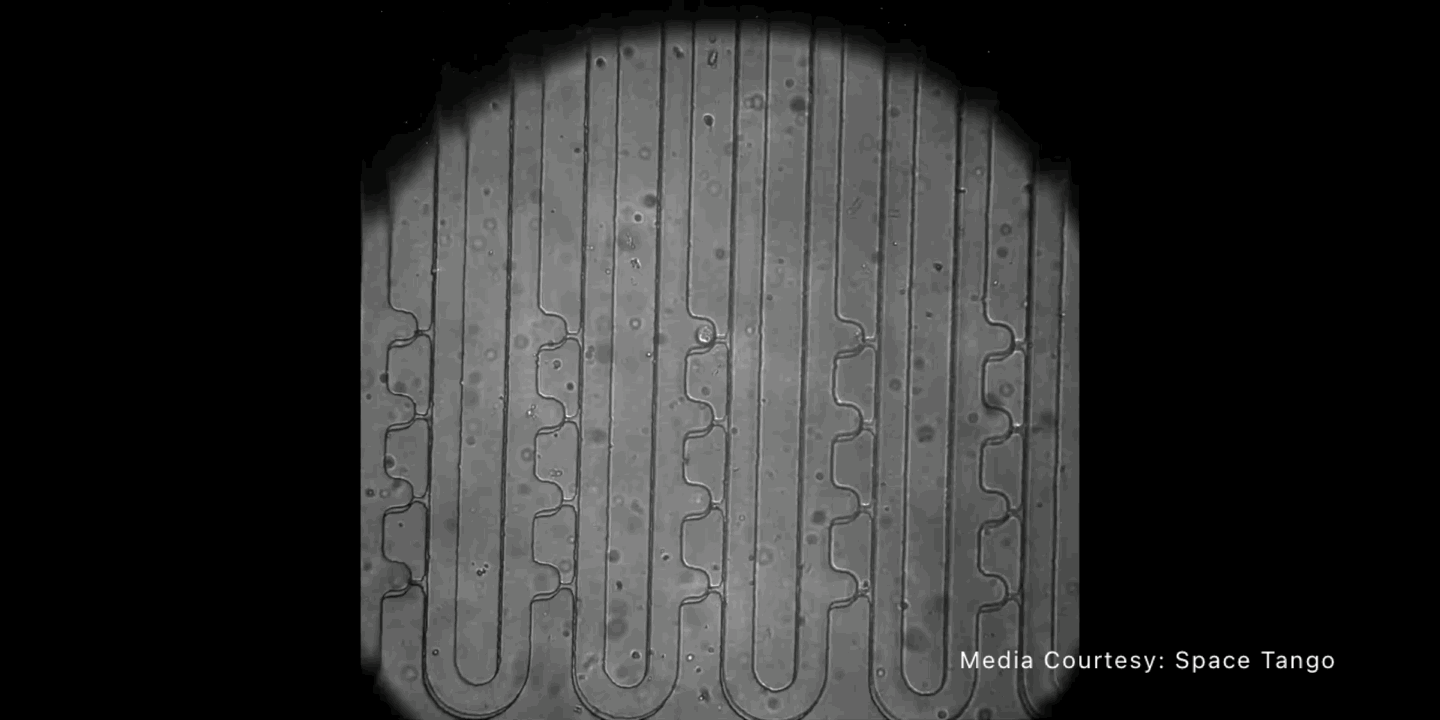
Two aims are being tested in this investigation, cellular tension and its role in altering BMP and mechanical compression in signaling cells with low cell tension related to BMP. The CubeLab in this investigation will facilitate the cell’s survival throughout the flight, including ascent and descent. The CubeLabs will utilize a tissue chip interface to visualize the cells and a 12-well culture vessel to house and feed the cells. A three-axis autonomous microscope will be used for on-demand imagining.
The investigation focused on the pressurization of single cells in a microfluidic chip designed to trap single cells in cups within microfluidic channels developed by a team at the University of Michigan (UMCH). The cell line used was an adherent bone osteoblast line, which means the cells must attach to their culturing device to grow and maintain health. Cell culture requires specific temperature control, CO2 environmental conditions, and sustained media exchanges to provide nutrients to the cells. Adherent cells, however, also need a cell lifting process to detach cell sheets from the culturing surface. In a laboratory setting, this process requires several different fluid exchanges, centrifugation, and pipetting to achieve a single-cell suspension. Intending to operate in a microgravity environment, this introduced a challenge for Space Tango engineers to solve!
While this intensive process is new to microgravity, it was successfully enabled using CubeLab architecture. The Space Tango team developed an autonomous cell lifting protocol using miniature pumps and agitation devices to transfer single cells to the UMCH chip. All of this is required before the experiment starts, at this time, single cells are directed into a tissue chip, a microfluidic device provided by UMCH. Then, a protocol begins to deliver precise increasing pressure steps to the cells enabling the observation of cell deformation using fluorescence and brightfield microscopy.
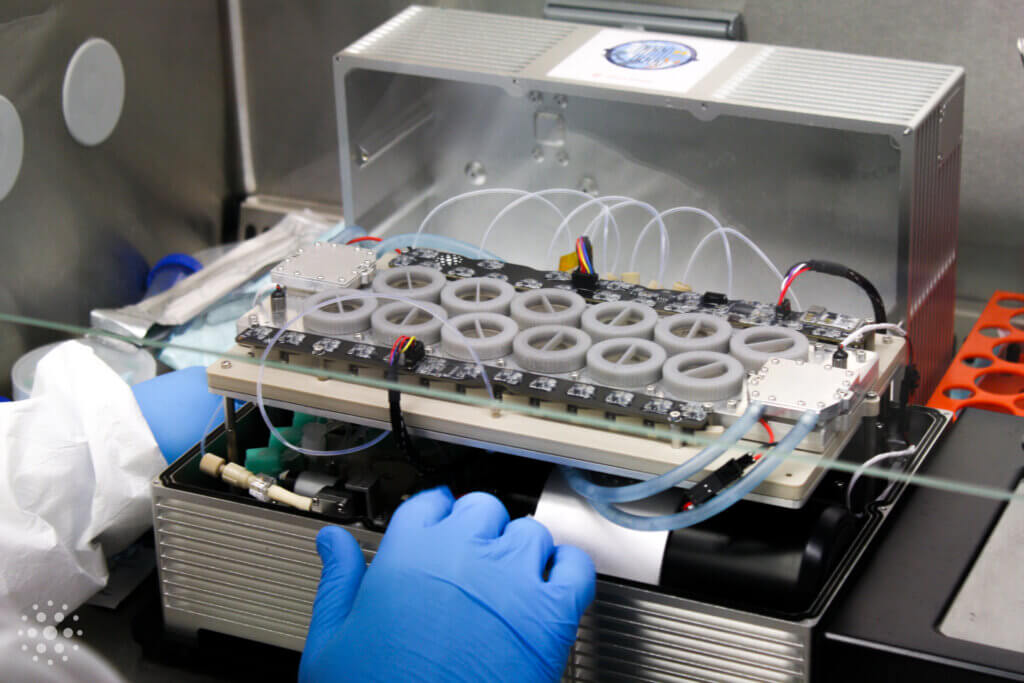
How was the science loaded into the CubeLab?
Cells were cultured normally several days before science loading at Kennedy Space Center’s Space Station Processing Facility (SSPF). On the turnover day, cells were passaged and dyed by the UMCH team and handed over to the Space Tango team in a suspension at a specific cell density. The Space Tango team then seeded cells directly into the bags in the payload to adhere beginning 24 days before launch. Chips were passed from the UMCH team to the Space Tango team for final checkouts to ensure the chip was sealed to the full system interface.
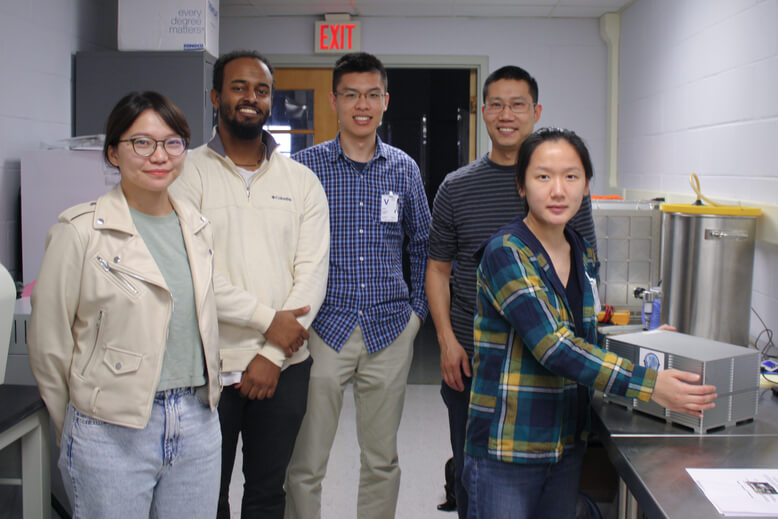
What equipment was used to get to microgravity?
The payload was delivered to the International Space Station (ISS) using a PAUL Facility, allowing the CubeLab to remain powered from the time of science loading to experiment termination, such that the biology environment remained optimal throughout its journey in space.
What did the de-integration process look like?
This experiment was unique to other biology payloads, as it ended after cell pressurization in the chip and did not require science return. After observing sufficient cells in alignment with the scientific objectives identified by UMCH, the CubeLab shut down in preparation for hardware return.
What did the on-orbit data look like?
Space Tango and the University of Michigan research team had a personalized customer dashboard throughout the experiment providing access to real-time data of the payload environment on the ISS. Important hardware data, such as pump and valve states, were communicated to monitor automated software routines. This allowed for straightforward visualization of when specific actions were taken, such as successful media exchanges to appropriate culture vessels at specified times.
The dashboard also provided readings of the gas environment, chip pressure, and temperature of the biology and experimental fluids. This dashboard allowed the partner team to follow along with practical actions as they happened and follow along via a video stream of chip pressurization on the ISS. Media was also downlinked from on station and delivered to the partner team within two days.
What science requirements guided the selection of science interface systems?
Similar to Aim 1, this investigation required pressurization of the biology system in a different mode. Rather than single-cell pressurization, the experiment focused on osteoblast spheroids encapsulated in gels run through a specific feeding routine before pressurization. However, additional material and design constraints are new to this aim to support the pressures specified in the experiment. The biology groups comprised three pressure groups, two treatment groups, and a fixation group. Therefore, the system had to support 24 gels that are sized to fit in a 24-well standard lab plate.
In microgravity, solid materials, such as the gels in this experiment, do not settle to the bottom of a plate as in normal lab settings. With that in mind, it was essential to consider how to contain the gels within the well so that they would not float aimlessly and interfere with automated processes providing fluid necessary for survival or the experiment protocol itself. The Space Tango 12-well CubeLab system was adapted with these requirements in mind, prompting the use of custom well inserts to ensure experiment success.
The CubeLab also had to be designed to fit the three different media required for the pre-pressurization feeding regimen, along with three other fluids required for the different types of fixation, requiring an intensive fluid routing system to ensure the right fluids were delivered to the right wells, at the right time, controlled remotely through automated software developed and tested rigorously.
How was the science loaded into the CubeLab?
The same cells were used for this experiment as Aim 1, but developing and encapsulating spheroids required further preparation before science loading. Once the UMCH team prepped the gels, the Space Tango team loaded the gels into custom inserts designed to hold them within the wells, then subsequently loaded those inserts into the wells. The CubeLab system was fully checked out and primed with the necessary fluids to support spheroid health to ensure the gels would not have a long lapse in time, during which they weren’t kept in the optimal culture conditions.
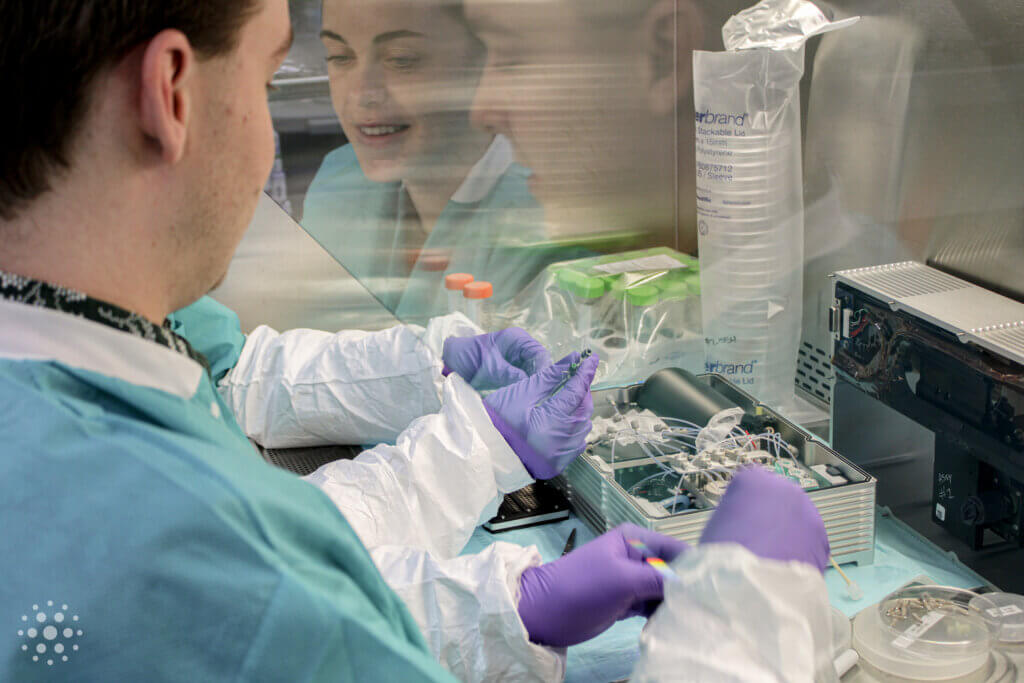
What equipment was used to get to microgravity?
The payload was delivered to the ISS using a PAUL to maintain biology throughout the ascent and on-orbit operations. At the end of the experiment, the biology required cold stowage after fixation, during which the payload was moved to a -35°C environment on the ISS and during descent until the payload was returned to Space Tango for deintegration.
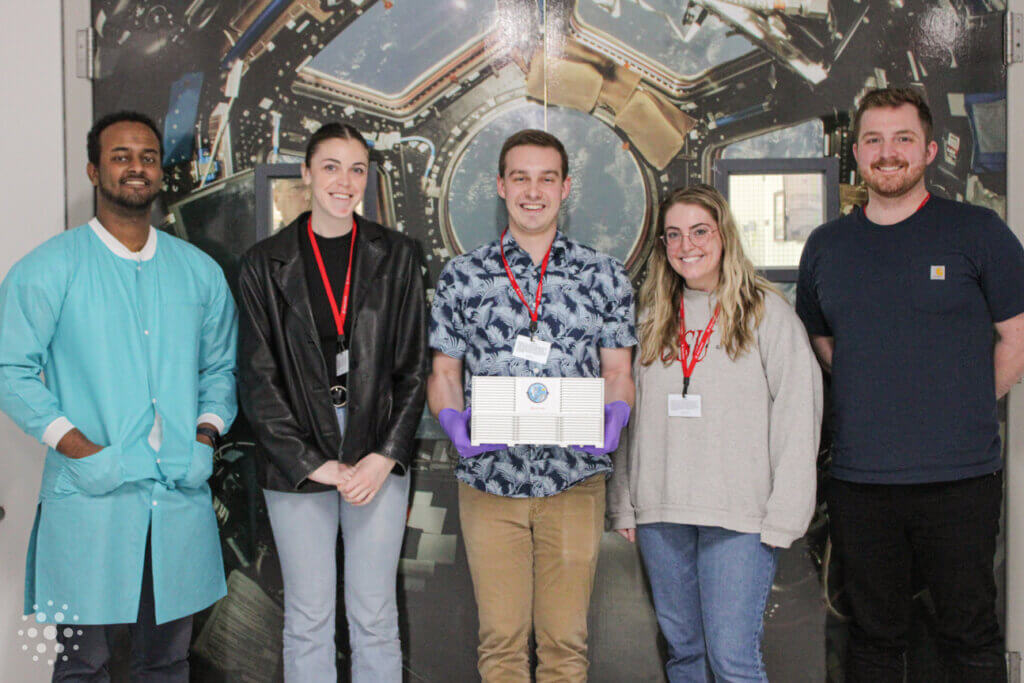
What did the de-integration process look like?
The 12-well system allows for a systematic deintegration process. The primary science constraint here is the careful but quick removal of samples to avoid unnecessary “freeze-thaw” samples. Well-inserts containing gels were removed from the CubeLab system, loaded into a standard off-the-shelf 12-well plate, separated by fixative, and placed back into the freezer. Using the provided requirements from the UMCH team, the plates were shipped back to them overnight on dry ice.
What details were communicated via the partner portal?
The Aim 2 dashboard was very similar to the Aim 1 dashboard. The protocol actions and pressure of wells were displayed throughout the experiment, along with standard CubeLab environmental data, to ensure the UMCH team could track the experiment’s progression.
Written By: Molly Sullivan
Edited By: Danielle Rosales
Last Revision: July 3, 2023